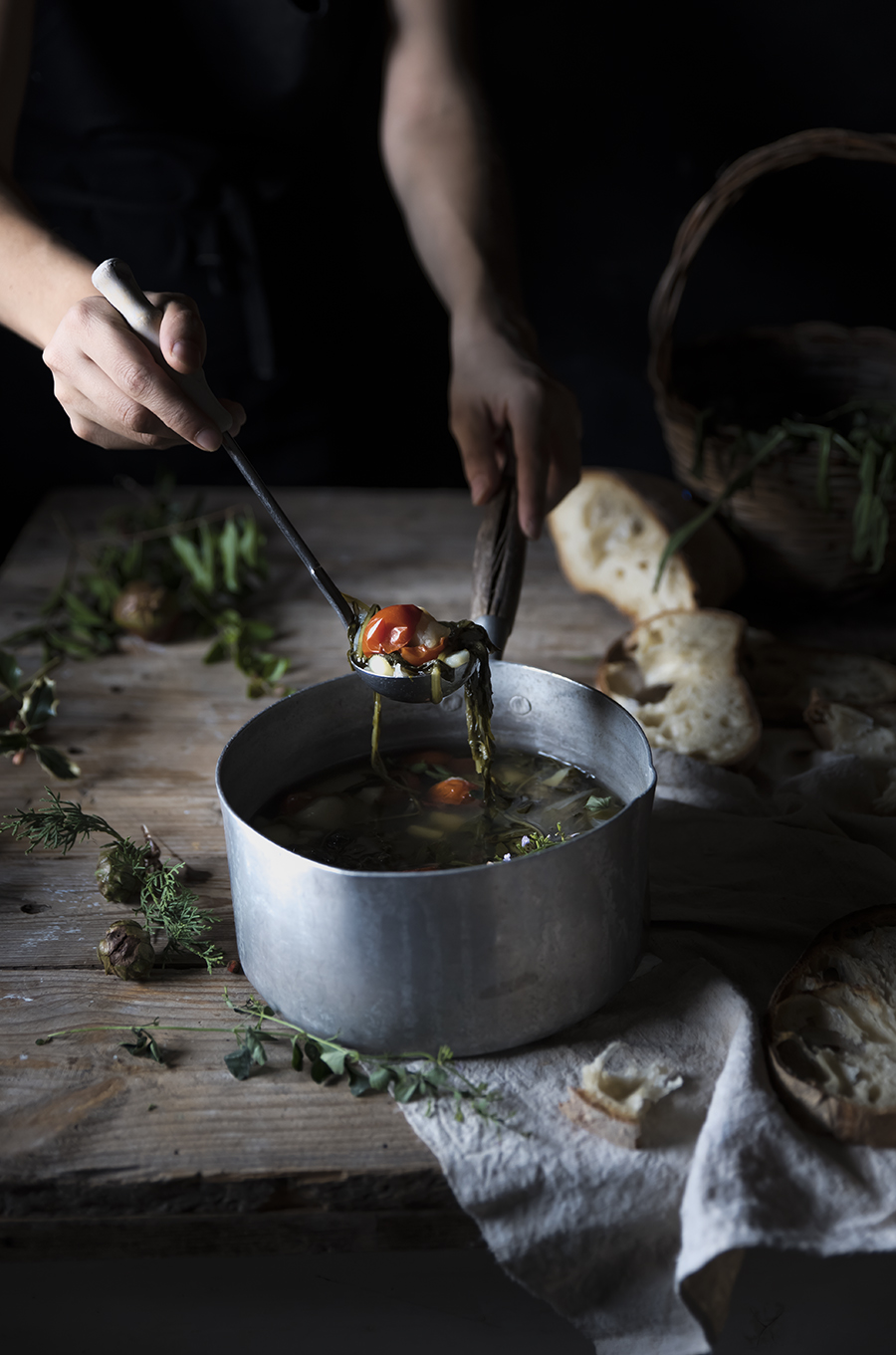 (English version below) La prima volta che ho assaggiato l’acqua cotta era un giorno piovoso e freddo, ero andata in un piccolo locale non troppo lontano da quella che sarebbe stata un giorno casa mia. L’ho mangiata nella tipica ciotola di terracotta, così come da usanza, in compagnia del fuoco che scoppiettava nel camino acceso. Ho pensato che fosse un piatto perfetto per le giornate invernali e per le persone che amano le cose semplici come me, per quelli che pensano che una fetta di pane, cotto nel forno a legna e a lievitazione naturale, con un po’ di olio nuovo e poco sale sia una delle cose più buone della terra. Ho subito capito che l’avrei preparata anche a casa mia, tante tante volte.
(English version below) La prima volta che ho assaggiato l’acqua cotta era un giorno piovoso e freddo, ero andata in un piccolo locale non troppo lontano da quella che sarebbe stata un giorno casa mia. L’ho mangiata nella tipica ciotola di terracotta, così come da usanza, in compagnia del fuoco che scoppiettava nel camino acceso. Ho pensato che fosse un piatto perfetto per le giornate invernali e per le persone che amano le cose semplici come me, per quelli che pensano che una fetta di pane, cotto nel forno a legna e a lievitazione naturale, con un po’ di olio nuovo e poco sale sia una delle cose più buone della terra. Ho subito capito che l’avrei preparata anche a casa mia, tante tante volte.
Nel nuovo numero di Taste&More, uscito oggi, vi racconto qualcosa di questo antico piatto della Tuscia laziale, viterbese e romana. A differenza dell’acquacotta toscana, non richiede un soffritto, si fanno bollire le verdure e gli aromi nell’acqua aggiungendo l’olio “a crudo” solo alla fine, direttamente nella ciotola di terracotta. Possono essere aggiunti a questa leggera zuppa anche un uovo a persona o del baccalà. Ma vi lascio alla lettura di Taste&More, se volete saperne di più, potrete trovare tante magnifiche ricette che vi faranno pensare al Natale, tra queste anche le mie mini cake alle erbette con caprino e melagrana.
Che aspettate? Sfogliate il nuovo bellissimo Taste&More!
Acquacotta
Ingredienti per 4 persone
800 g di cicoria catalogna coltivata*
700 g di patate
200 g di pomodorini
4 fette di pane casereccio raffermo
4 uova
2 cipolle
1 spicchio d’aglio
cucchiai di olio extra vergine d’oliva q.b
mentuccia
peperoncino
* Se utilizzate cicoria selvatica è preferibile sbollentare la verdura a parte prima di aggiungerla nell’acquacotta.
Preparazione
Lavate accuratamente la cicoria ed eliminate le parti di gambo più dure e le foglie rovinate. Sbucciate le patate e le cipolle e tagliatele a pezzi. Mettete sul fuoco una capiente pentola d’acqua salata, aggiungete le patate e le cipolle, i pomodorini precedentemente tagliati a metà, il peperoncino e la mentuccia. Al bollore, unite anche la cicoria, cuocete fino a quando le verdure saranno ben cotte e l’acqua di cottura si sarà ridotta. Aggiungete le uova e cuocete per 5 minuti, fino a quando l’albume si sarò rappreso. Nel frattempo tostate il pane raffermo e ponetelo nei piatti, versatevi sopra l’acquacotta, l’uovo e cospargete con abbondante olio extra vergine d’oliva. Servite subito.
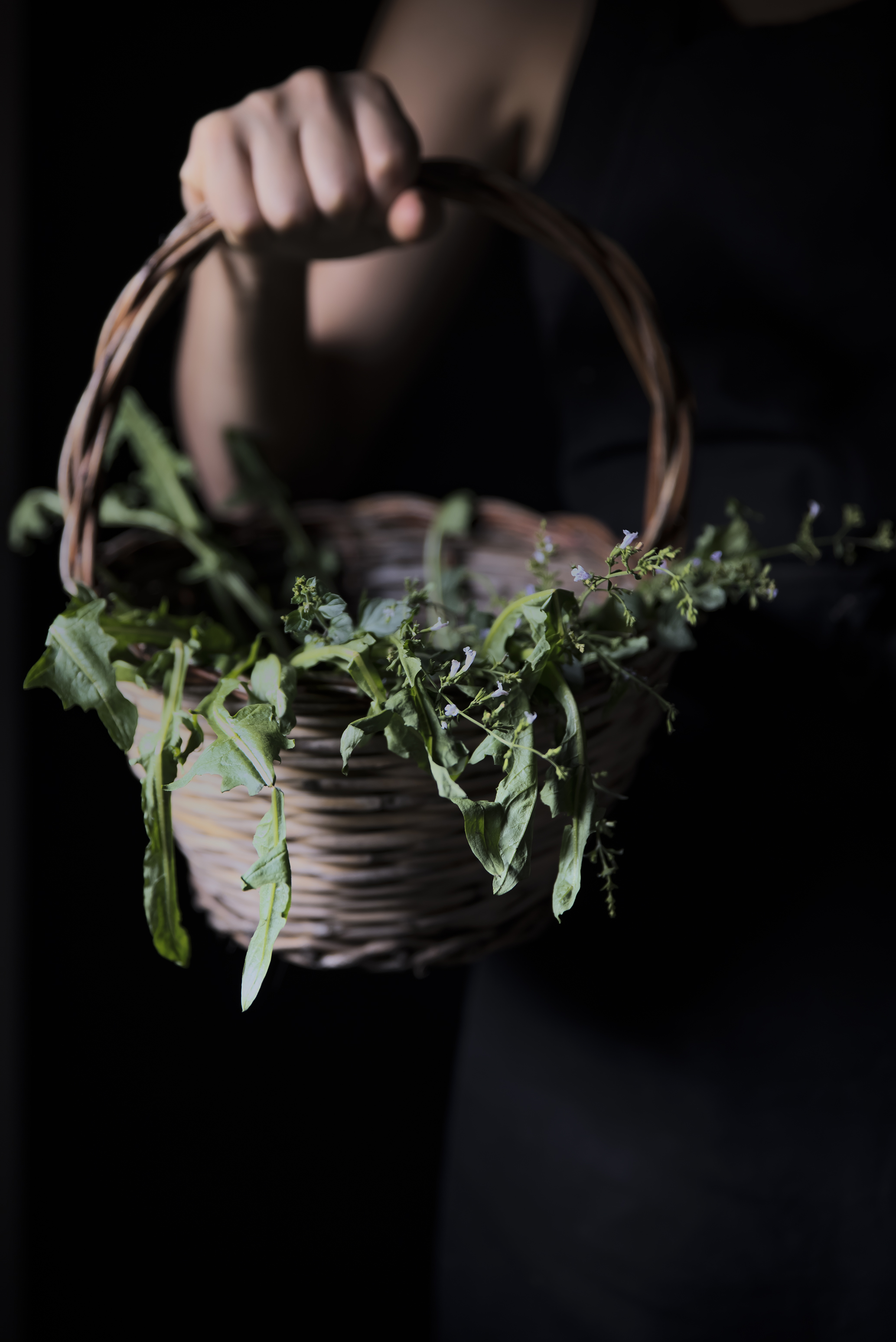
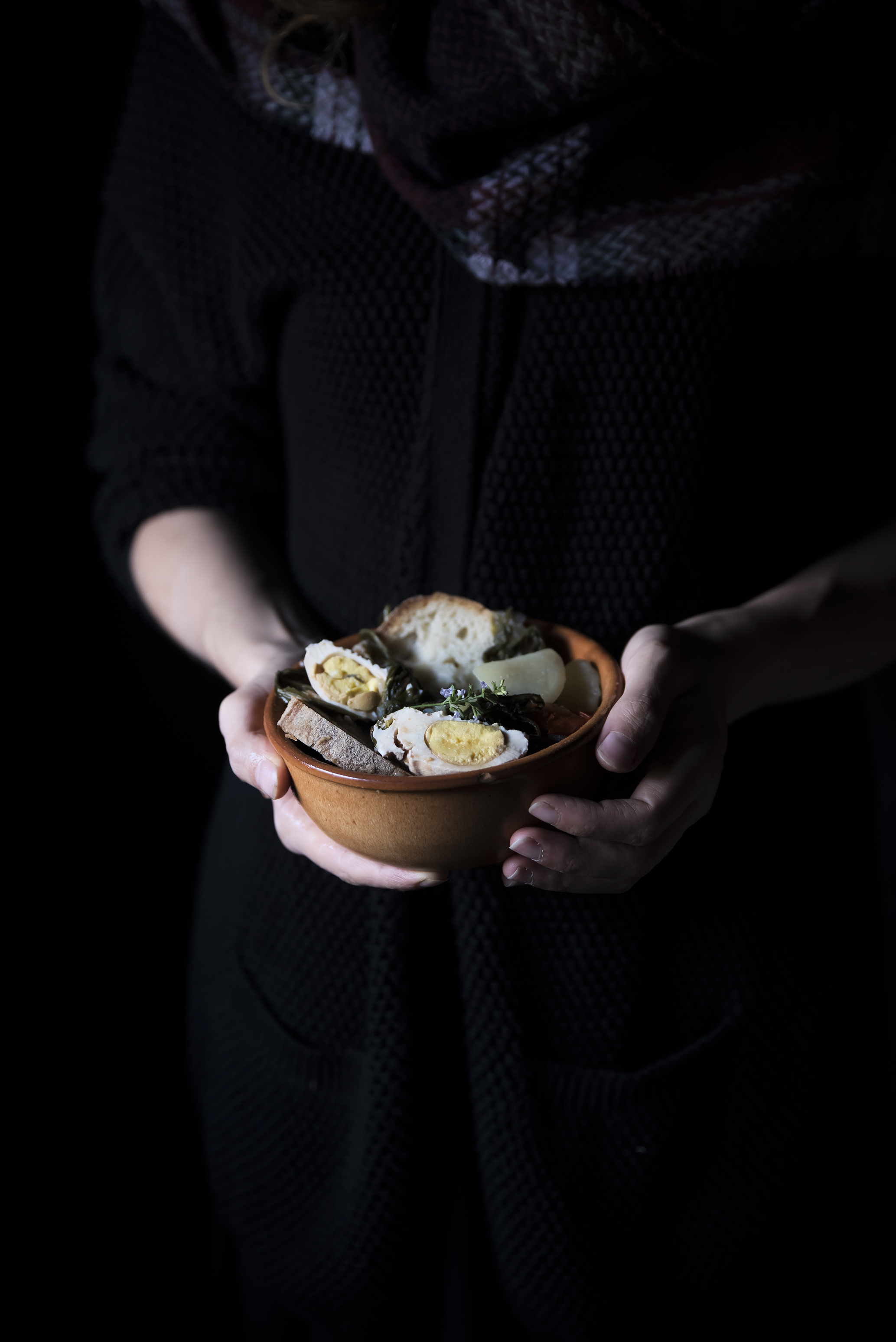
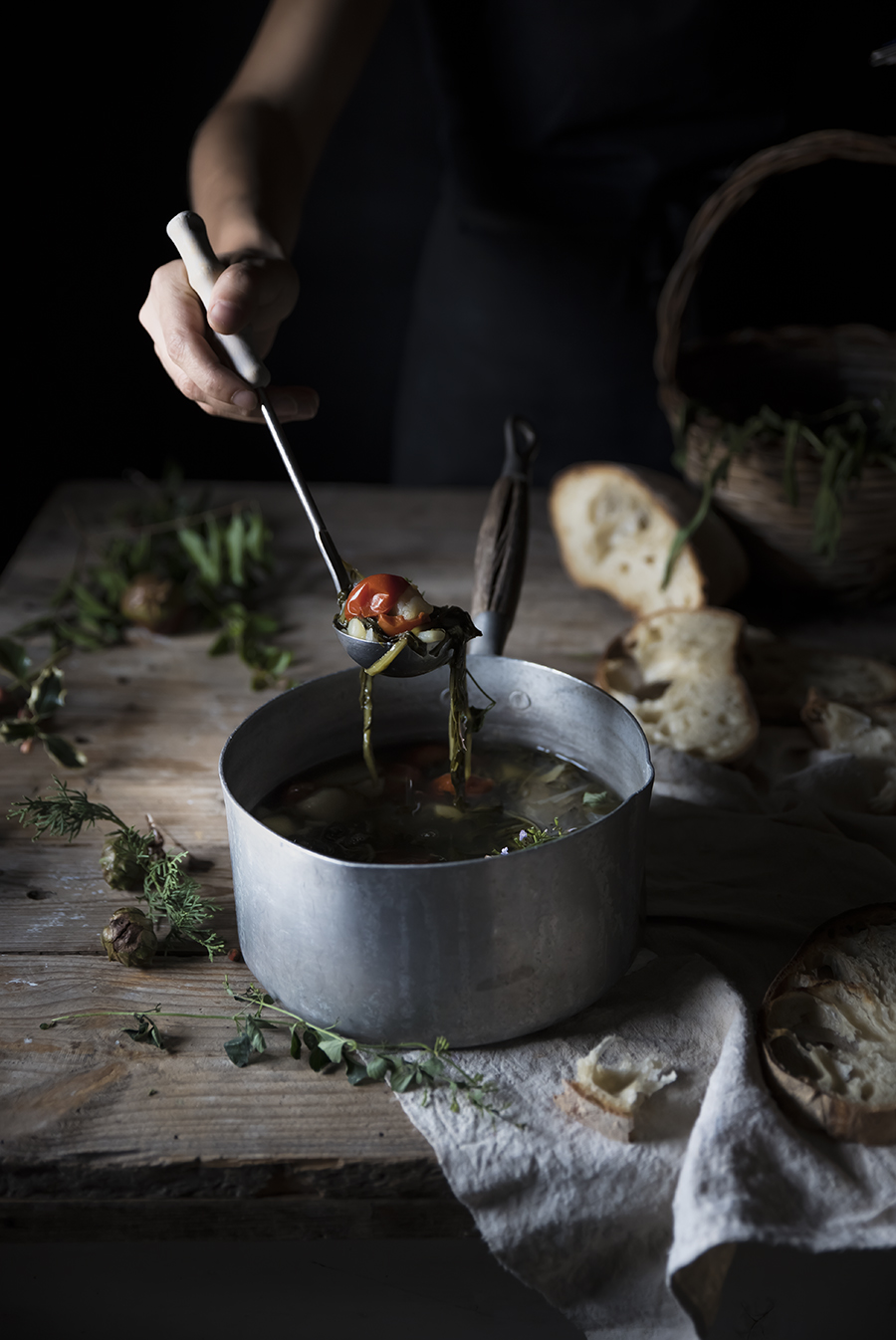
The first time I tasted the “acqua cotta” it was a rainy and cold day, I went into a small tavern, not so far from my house. I ate the soup in the typical and traditional terracotta bowl, with the company of the fire crackling in the fireplace. I thought it was a perfect recipe for the winter days and for people who love the simple things like myself, for those who think that a slice of sourdough bread, baked in a wood oven, with a little olive oil and a pinch of salt is one of the most delicious things in the world. I quickly realized that I would have prepared the acquacotta at home many many times.
In the new Taste and more magazine, published today, I told you something about this ancient recipe. It’s a soup with bread, seasonal vegetables and extra-virgin olive oil. Unlike the Tuscan acquacotta, the acquacotta from the Tuscia region of Rome and Viterbo does not require a “soffritto” , but simply calls for boiling vegetables and spices in water, only adding oil at the end, directly in the terracotta bowl. You can also add an egg for each person or some “baccalà”.
In Taste&More Magazine you can also find many wonderful recipes, that will make you thing about Christmas, like my mini herb tartlets with pomegranate seeds and caprino cheese.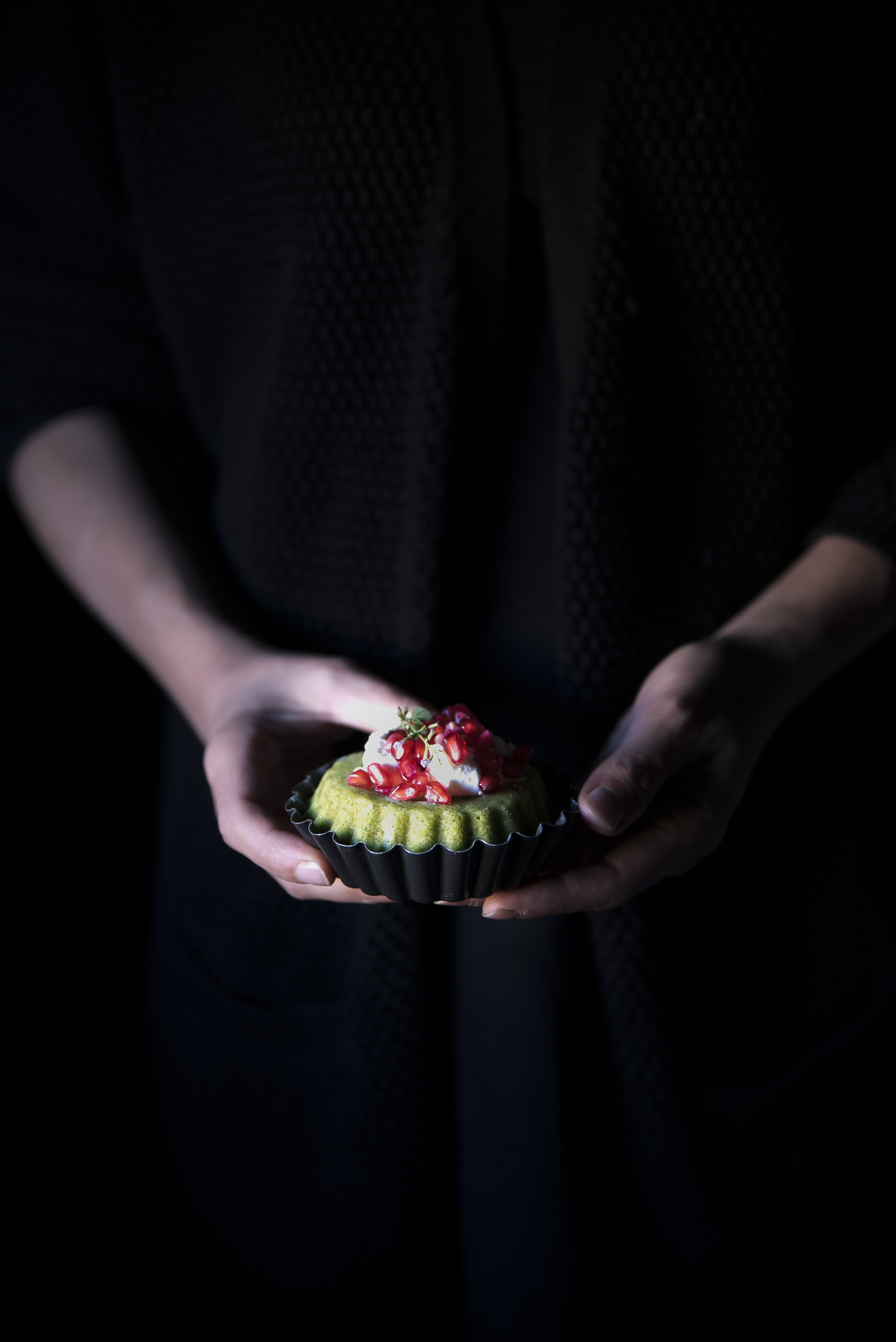
Acquacotta (“Cooked Water”, traditional soup from the Tuscia region of Rome and Viterbo)
For 4:
800 g di cultivated chicory (or country wild chicory, already blanched)
700 g potatoes
200 g cherry fresh tomatoes (or canned tomatoes)
4 slices of sourdough stale bread
4 eggs
2 onions
1 clove of garlic
extra-virgin olive oil, to taste
fresh nepetella
chili pepper
Wash the leaves of the chicory carefully, discarding any yellow or old-looking ones, cut leaves in half. Peels onions and potatoes and cut them into pieces. Put on the fire a pot filled one-third with water with a bit of salt, add the onions, the potatoes, the whole unpeeled cloves of garlic,the fresh nepetella,the hot pepper and the tomatoes. When the water boils, add the chicory, and cook until vegetables are soft but still wholes. Add the eggs into the soups and cook for others 5 minutes. Toast the bread. To serve: cover the bottom of the serving bowls with toasted stale bread and pour some cooking broth, vegetables and eggs. Sprinkle with good extra-virgin olive oil and if you like spread with grated pecorino cheese.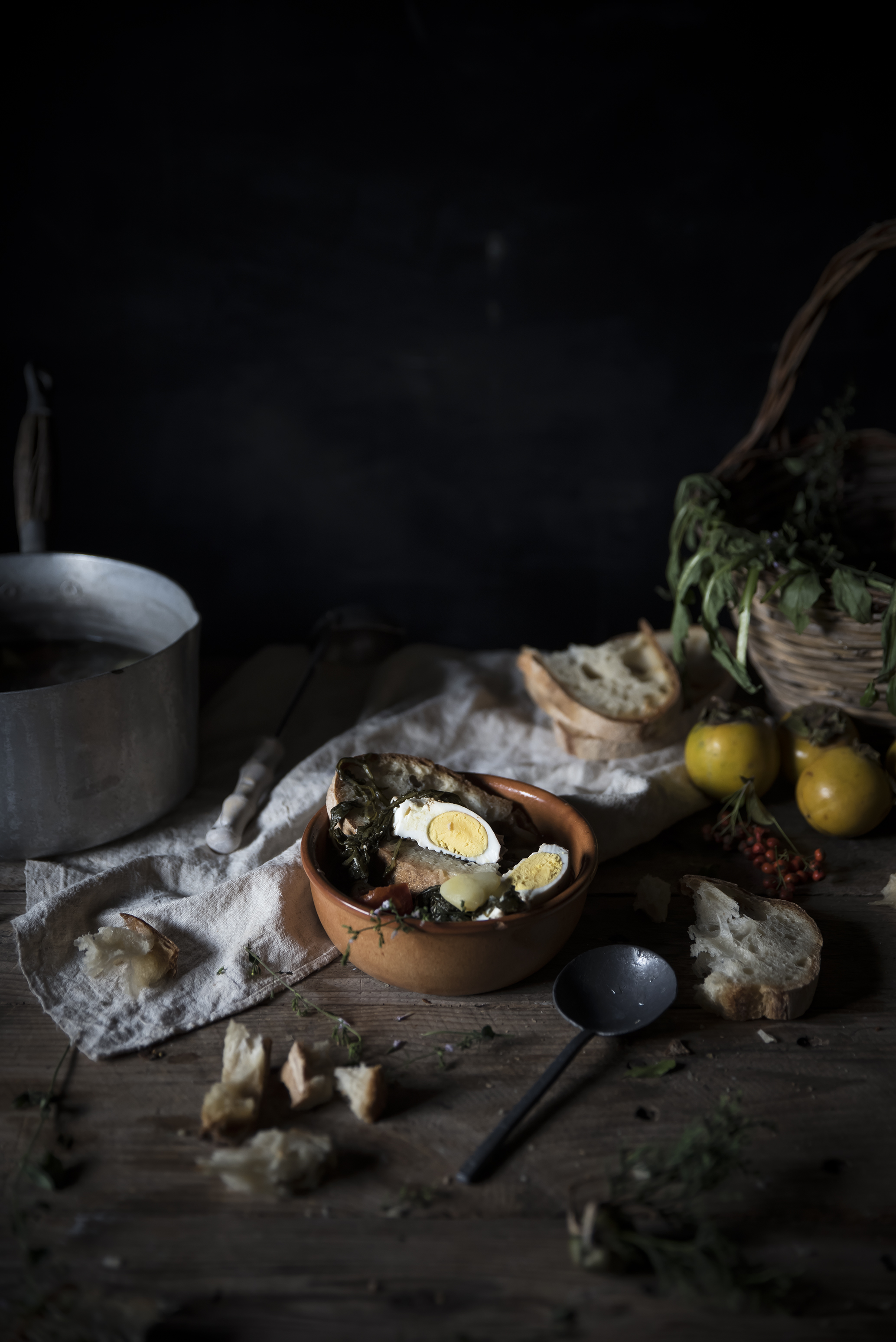


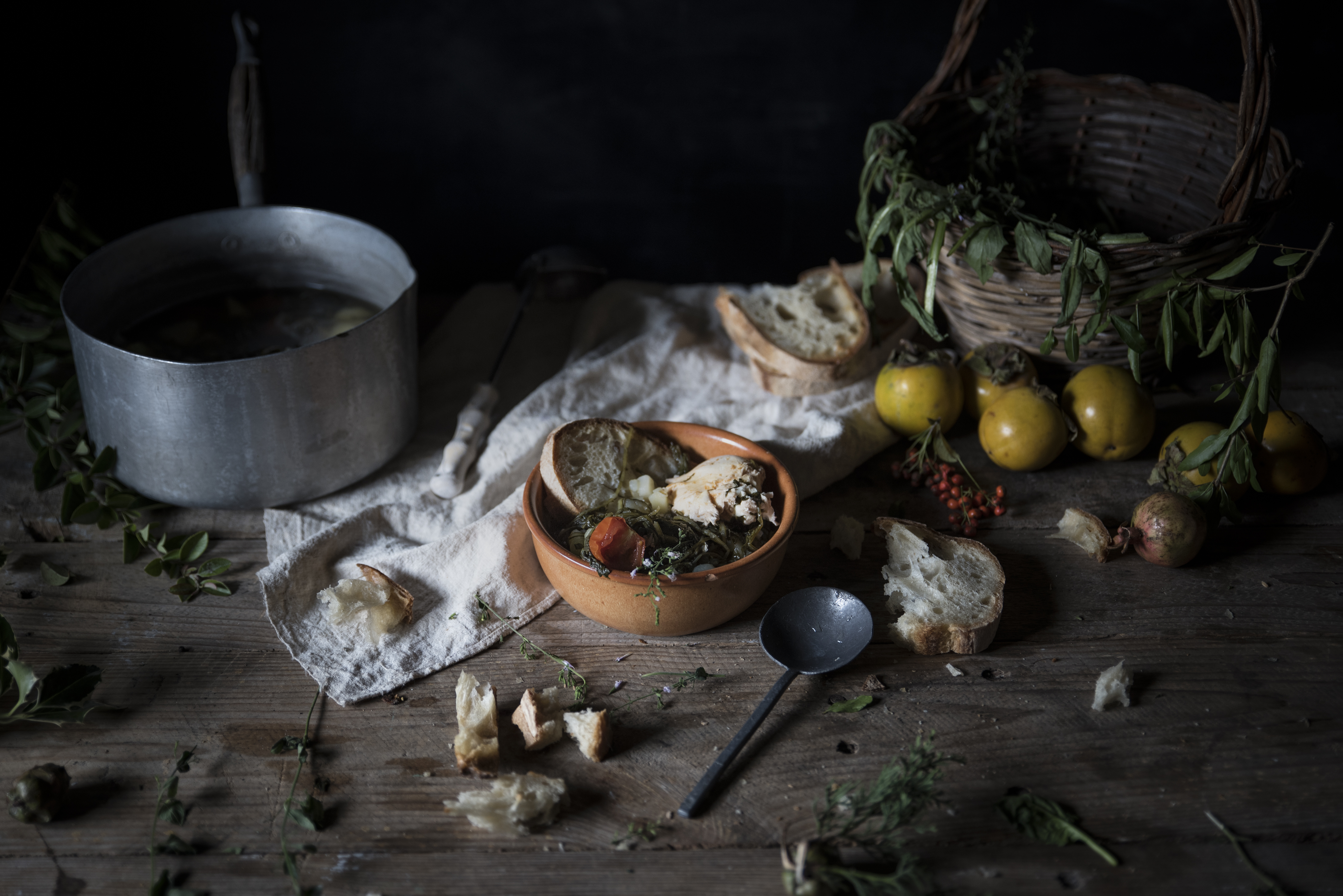
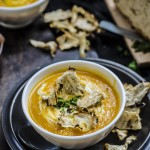


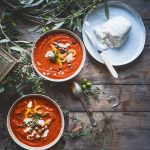
Penso di non averla mai assaggiata ma, con queste giornate fredde e piovose, rimedierei molto volentieri 😛
Posso autoinvitami da te??
Cara Consu, non sai che piacere mi farebbe! ^_^ :*
Una zuppa semplice, ma buonissima….conosciamo quelle toscane, ma non questa viterbese, un comfort food delizioso per scaldare i nostri inverni.
Come sempre incantata davanti alle tue foto *.* E la rivista è stupenda!!!
L.
CIAO CARA, RICORDO ANCORA QUANDO PREPARAVI RICETTE COLLEGATE AI FILM CHE IO SEGUIVO CON GRANDE INTERESSE, POI SEI CRESCIUTA IMPROVVISAMENTE CON LA TUA BRAVURA E POESIA.
CHE BEGLI SCATTI, SONO FAVOLOSI!
SPERO RIUSCIRAI A PREPARARE QUALCOSA DI NATALIZIO A BASE DI MIELE PER ME E PER IL MIO CONTEST. TI ASPETTO!
Ale grazie per le tue parole! Farò di tutto per farcela, il tuo contest sembra magnifico, grazie ancora <3